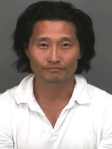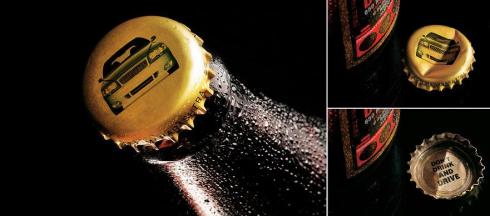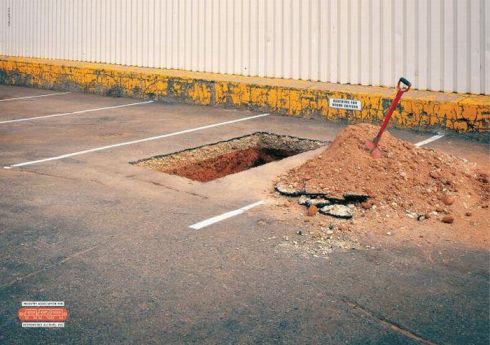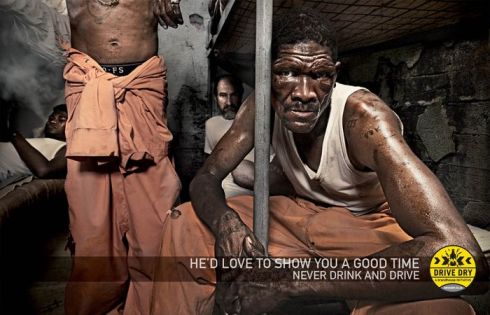You’ve probably all read this poem before; it’s been around as long as I can remember. I thought I would post it anyway. Very touching & sad, maybe a bit morbid (this seems to be the underlying theme of my blog…apologies for constantly putting a damper on your day!)
I went to a party, Mom,
I remembered what you said.
You told me not to drink, Mom,
So I drank soda instead.
I really felt proud inside, Mom,
The way you said I would.
I didn’t drink and drive, Mom,
Even though the others said I should.
I know I did the right thing, Mom,
I know you are always right.
Now the party is finally ending, Mom,
As everyone is driving out of sight.
As I got into my car, Mom,
I knew I’d get home in one piece.
Because of the way you raised me,
So responsible and sweet.
I started to drive away, Mom,
But as I pulled out into the road,
The other car didn’t see me, Mom,
And hit me like a load.
As I lay there on the pavement, Mom,
I hear the policeman say,
“The other guy is drunk,” Mom,
And now I’m the one who will pay.
I’m lying here dying, Mom…
I wish you’d get here soon.
How could this happen to me, Mom?
My life just burst like a balloon.
There is blood all around me, Mom,
And most of it is mine.
I hear the medic say, Mom,
I’ll die in a short time.
I just wanted to tell you, Mom,
I swear I didn’t drink.
It was the others, Mom.
The others didn’t think.
He was probably at the same party as I.
The only difference is, he drank
And I will die.
Why do people drink, Mom?
It can ruin your whole life.
I’m feeling sharp pains now.
Pains just like a knife.
The guy who hit me is walking, Mom,
And I don’t think it’s fair.
I’m lying here dying
And all he can do is stare.
Tell my brother not to cry, Mom.
Tell Daddy to be brave.
And when I go to heaven, Mom,
Put “Daddy’s Girl” on my grave.
Someone should have told him, Mom,
Not to drink and drive.
If only they had told him, Mom,
I would still be alive.
My breath is getting shorter, Mom.
I’m becoming very scared.
Please don’t cry for me, Mom.
When I needed you,
you were always there.
I have one last question, Mom.
Before I say good bye.
I didn’t drink and drive,
So why am I the one to die?
I think that’s a question we often wait too long to ask ourselves. Why is “why” the toxic word used after the fact: Why did this happen? Why did they let him drive? Why didn’t someone take his keys? Why did she get in the car with him? Why didn’t she wear her seat belt?
WHY do we always wait until it’s too late to realize we could have, should have, would have done something to prevent such a tragedy from happening…had we known at the time?
We’ve got to stop asking why and focus on what we can do to stop people from driving under the influence. But how?
I don’t care what anyone says. Binge drinking HAPPENS. You could lecture someone for 8 tedious hours on all the dangers of alcohol and what drinking excessively does to your body’s vital organs, and they will still go out and get drunk with their friends a day later. I will be the first to admit that I often drink enough to have a hangover the next morning. Life is short and I love letting loose, celebrating my friendships, and dancing the night away with my boy. Things are a million times funnier when I’m drunk. My shyness fades with my sobriety. My walls come down and I have the most incredible heart-to-hearts with people I never thought I’d build relationships with. The bottom line is that I like my Kettle pineapple on the rocks. As a matter of fact, I like 4 or 5 of them. Maybe you can relate, maybe not. It is what it is. The secret, though, is to do whatever you do somewhat responsibly.
YOU ARE NOT INVINCIBLE. I think it’s hilarious (or perhaps hilariously disturbing) when people who drink and drive say, “don’t worry, I wouldn’t drive if I wasn’t capable” or “I’m a really good drunk driver”. Yes. I have heard both statements. Multiple times. Hmmm…
Well who the fuck would ever get into a car thinking they CAN’T drive!? Have you ever heard someone say “I’m really drunk, I think I might crash driving home but I’m going to do it anyway.” WTF? No. And if you have, you need to reevaluate your friendship with that person. There is no such thing as “safe” drunk driving! I don’t know where anyone got that idea, but it seems to be a popular “justification” for getting behind the wheel after a night of partying. Take it from the people who drove drunk and killed either themselves or someone else. They obviously thought they were capable of getting home in one piece. They were wrong. Learn from the mistakes of others….life is too short to make them all on your own.
Okay, back to my question. What can we do to stop driving under the influence and how? This is where I need the attention of Larry Slagle. Orange County Yellow Cab has a fleet of over 300 sedans and vans, meaning that nobody should ever be short of a ride when in need. Well, obviously, a cab shortage is not the issue. It’s the through-the-damn-Yellow-Cab-roof fares that drive us (literally) away from this safe ride option. Who wants to pay $12 (plus tip) for a 6 minute ride home? Not me (but I hand it over anyway. Ugh.) That’s the amount I usually pay coming back to my apartment in Newport from the bars in Corona Del Mar (which probably costs less than a buck in gas). That’s technically sextuple (?) the times it would cost if you drove yourself! I checked out the Yellow Cab website and here are the rates as listed:
$2.95 flag drop (that’s almost $3 before you even step foot in the cab) and then $2.60 per mile
Bloody hell. Okay, I understand these people need to make money. It’s a business, after all. But I do see a lot of cab drivers sitting around outside bars for lengths of time (aka making zero dollars) while hoards of drunks bundle into their own cars in the adjacent parking lot. If you lowered the price of your service, wouldn’t demand for that service increase? Unfortunately not much research has been conducted around this topic so it’s hard to say. But I think if cabs had more reasonable rates, those people driving themselves home for “free” would instead at the very least consider paying the cab fare and the cabs would therefore be making more rounds between the bar and people’s homes (thus making more $$$). Well that’s my theory. I personally think it’s worth a shot.
Let’s take it a step further. What if Yellow Cab created a safe-ride program that allowed us to invest in a fancy membership card that would credit us these rides home? It would be the same concept as above, but provide some exclusivity so that more people might be more inclined to hop on board. This would also enable people to pre-pay when they are in the right state of mind so they don’t have to worry about spending cash when they’re drunk. When you sign up, you pay $100. Let’s just say that’s 30 rides home within a 5 mile radius. Twice a week….15 weekends…4 months worth of safe rides! And all you have to do when you get in the cab is give the driver your card to swipe and BAM. You’re done. Easy, no?
If any of you have suggestions on how to make this proposal more effective, please let me know! I’m not quite sure where I’m going with this…







































